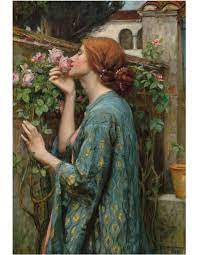mongolian 20th century
O.Tsevegjav, Stallion Fight, 1958
As of now the oil painting is located Mongolian National Modern Art Gallery. I also read there are plans to turn it into a statue. The recreation of this painting will be turned into a statue in Dornod Province, and it was set in motion by the Dornod Youth Federation in Ulaanbaatar.
Tsevegjav is a 20th-century Mongolian painter of Stallion Fight. I haven't seen many or any horse fighting paintings that have truly stuck out to me. This painting caught my eye immediately. The way the two stallions in the middle of the painting are intertwined just has such a distinct movement. In my head, I can picture this fight beyond what's happening on the canvas. The brown horse is being slammed to the ground by the chestnut stallion. I can see the whites surrounding the dark brown horse's eyes as they whinny all the way to the green grass. I can feel the wind rushing by as the horses on the left flee the scene and run off the cavus. There is a mare along with a foal, following after its mother. Although they are in the mid-ground and not the main focus, the artist did not spare any expense on the details of the powerful animals. On the right side is an old man in a blue deel, which is traditional Mongolian attire. Behind the man, there are gesture paintings of stallions as if they are too far away to see clearly. I also can't ignore the beautiful light blue sky in the background. I can't get over how round the clouds are on the right side. It's quite pleasing to view.
Mongolians can't do without their horses. I read in an article that there's a saying about Mongols and their horses,” A Mongolian without a horse is like a bird without wings”. This painting was culturally important because outfits the equestrian subject. There's so much movement in this painting it belongs somewhere where there's a lot of movement. I'm not sure where, but I could see it over a teal couch in the living room. It's a grand painting to gaze upon.
B.Sharav, one day in Mongolia, 1912
Here, this 20thcentury Mongolian artist has broken away from their traditional religious paintings to depict a more normal day in nomadic Mongolia. He was a trained Buddhism monk and a court painter for Bogd Khaan. As of now, this humoristic oil painting is located in the Zanabazar Museum of Fine Arts.
I bet you're wondering how this painting has a bit of a sense of humor. It's because of the large geographical view of the citizens partaking in boring everyday content. The painting stands at 176x136cm, and with it being so large, the everyday activities are spread out. On the bottom left there is a group making fibers and a little above them you can see another group out on a hunt. It's a masterfully large spread-out painting. There are over 300 figures in this painting all scattered about doing typical activities of citizens in this Mongolian providence during the 20th century.
When I look at this painting, the first thing that comes to mind is snakes and ladders. When I see the bird's-eye view of the clusters of people, I think of the snakes and children surrounding the board game, and the lines creasing the ground remind me of the letters. It also draws my eyes in the direction the game pieces go. My eyes start at the first cluster of individuals, structures, and animals on the bottom left and then to the adjacent side then in a zig-zag position till you see the next cluster of civilization on the right, then you get to the blue trees in the top left. its quite a fascinating painting because of the different viewing perspective and more branched out subject matter.
“The World through a Mongolian Painter's Eyes.” Jargal Defacto, http://jargaldefacto.com/article/the-world-through-a-mongolian-painter-s-eyes?fbclid=IwAR2cwd0FyZaONCwZvVSQ7ntsi2_z4yf2DqxXBYU_cJs3GwjQadzu-IyjBI4.
“9 Must See Masterpieces of Mongolian Paintings: Mongolia Travel Blog.” Mongolia Tours, https://www.toursmongolia.com/mongolia_travel_news/9-must-see-masterpieces-of-mongolian-paintings.
asterpiece: 'Stallion Fight'.” MONTSAME News Agency, https://www.montsame.mn/en/read/164664.
“Famous Painting 'Stallion Fight' to Be Made into a Statue.” The UB Post | Mongolia's Leading English Language News, 22 Apr. 2018, https://theubposts.com/famous-painting-stallion-fight-to-be-made-into-a-statue/#:~:text=Tsevegjav%20will%20be%20recreated%20as,O.
“Mongolian Fine Art Masterpiece 'The Household of the Plain'.” MONTSAME News Agency, https://montsame.mn/en/read/174777.


Comments
Post a Comment